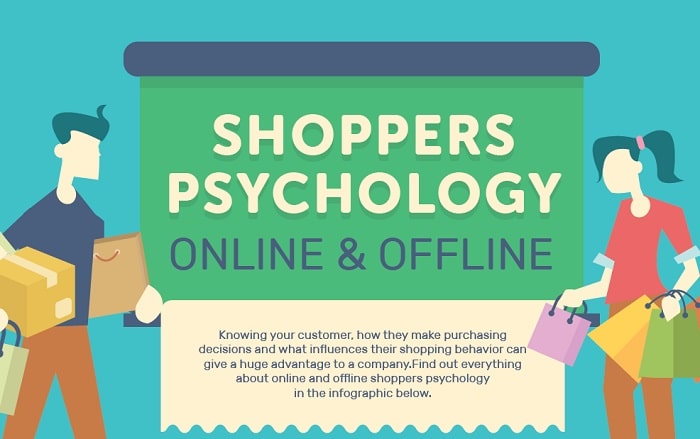Tricks and Tips into Shopper’s Psychology | Infographic

Stores, marketers, and retailers have always had one common goal – to get inside your head as a shopper and make you buy stuff. What’s interesting is that they do this so clandestinely, that you feel you are still in control of your buying decisions.
On the contrast, you are acting under the influence of the triggers they have put in place to make you continue to increase the number of things in your cart, and delay that checkout till you have cleared out your account.
This is called ‘Shoppers’ Psychology’ – it’s about knowledge about customers, their purchasing tendencies and factors that influence their decisions to buy, and the things that affect their behavior.
There are many different ways a brand might use shopper’s psychology to get your attention. Direct methods like coupons are always a good idea, which is why the Internet is flooded with Groupon discounts for nearly all types of products or services. The bigger the discount is, the more people will be attracted to it because they feel like they’re missing out on a great deal.
Then there are more indirect approaches, like using music or certain colors to subconsciously affect people’s decisions. Whatever the case may be, a lot of effort has been invested into progressively understanding the psychology of shoppers.
Why is that so?
Because times are constantly changing, and factors such as technological feats and user preferences continue to evolve. What was considered the deal of the year or bargain a while ago may not necessarily hold the same status today. The reason behind this is nothing more than the advent of a tech such as artificial intelligence and its application to different products.
Let’s consider some famous brands, and see examples of how they use the understanding of the shoppers’ psychology to get you to buy things:
Apple
Visit an Apple store and you will see the laptops set in such a way that it’s slightly open at an angle of about 70 degrees. Why? Because they want you to “see what’s inside” and instinctively touch it. Touch it, and you already develop a bond with the device. Buying no longer feels far fetched.
Bloomingdale’s
Bloomingdale’s is a department store with products such as clothing, footwear, leather goods, bedding, furniture, jewelry, beauty products, housewares, and café. They are headquartered in New York City.
What do they do to get to customers? They use coconut in swimwear to simulate a tropical paradise experience. In lingerie departments, they use lilac for a sensual appeal. And how do they get you to buy baby clothes? They use baby powder on the products. Ingenious, right?
NikeTown
Nike is a leading footwear manufacturing company based in Oregon, United States. To boost its brand recognition, as if it needed it, it’s using vibration music in the stores. You, as a shopper, would just naturally gravitate towards the product because the music already subconsciously tells you to.
Victoria’s Secret
Victoria’s Secret, the American designer, manufacturer, and marketer of women’s lingerie, womenswear, and beauty products was founded in 1977 and is based in San Francisco, California. It uses soothing music played in stores to facilitate conversations between buyers and sales representatives. Your guess is as good as mine on what the outcome of such conversations would be.

